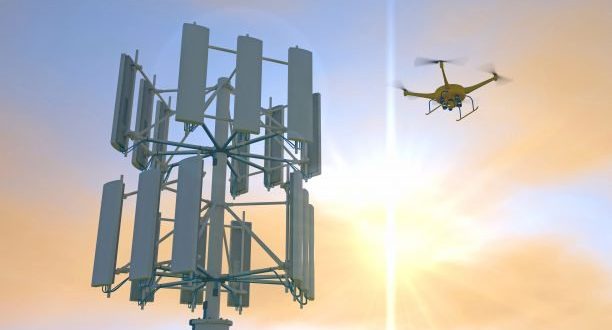Guest put up by Colin Snow —
Drone inspection – Shutterstock
We simply launched a brand new analysis report titled “Five Valuable Business Lessons About Drones in Asset and Infrastructure Inspection” This is the fourth in a sequence of white papers supposed to share classes realized in particular industries and find out how to maximize the worth drones can ship in these industries. This 12 months, we’re constructing on the evaluation we did for the 2016 “Truth About” papers by incorporating real-world expertise gained from companies and drone pilots working below the Federal Aviation Administration’s Small Unmanned Aircraft Regulations (aka FAA Part 107).
In the report, which co-authored by Chris Korody, we exhibit what drone operators servicing all kinds of industries have realized about what works and what doesn’t. We discover each the advantages and limitations of drone inspection initiatives and provide sensible recommendation to could be adopters. We reply questions like: What have firms realized about creating their very own inner drone operation teams? And the place can we go or what can we anticipate from right here?
Here is an excerpt:
“While both media and investors have primarily focused on opportunities for using drones in the construction and agriculture industries, inspection applications have fostered innovation together with significant returns on investment. The reasons begin with the “four Ds”—a time period coined by GE Ventures to explain the distinctive potential of drones to fulfill the wants of their discipline companies clients. The 4 D’s describe any exercise that’s tailored to be carried out by a drone, and are:
- Dull
- Dirty
- Dangerous
- Distant
In a 2014 interview, Sue Siegel, the CEO of GE Ventures, added a fifth “D”—for information—saying merely, “Imagine that if you’re doing it faster, you might be able to do it more often. And more data typically will give you better data.”
The 4 Ds+1 mixture is without doubt one of the most compelling arguments for drone adoption in firms the place uptime is cash, crews are costly, and buildings and amenities are sometimes anticipated to final 50 to 100 years.
The different compelling argument is price discount. McKinsey Consulting’s latest white paper “Preserving the downturn’s upside” highlights how the oil and gasoline trade decreased prices by 29% in response to falling oil costs. They present that 40% to 50% of the financial savings got here from eliminating the demand for a wide range of companies, together with manned aviation assist. The innovators found out find out how to put drones to work.”
The report goes on to debate how drones and the info from drones provide enormous benefits within the oil & gasoline, telecommunications, and utility industries. It additionally supplies insights from Dexter Lewis, PE, senior engineer within the analysis and improvement group at Southern Company (NYSOE: SO) which brings electrical energy and gasoline to 9 million clients.
You can get the free report right here.
If you’ve questions about what’s within the report or want to remark on it after studying it, write me at [email protected].
 Unmanned Aerial Vehicle The latest drone news
Unmanned Aerial Vehicle The latest drone news




